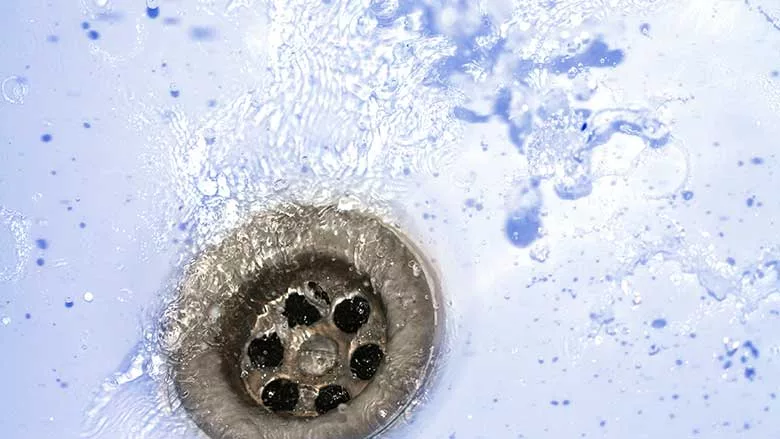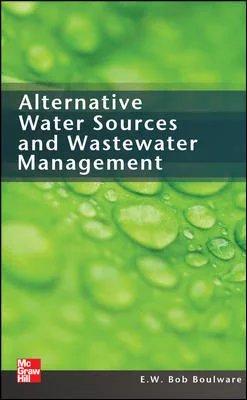Dave Yates column: Use water twice?
Greywater reuse systems offer solutions to areas facing water scarcity.

Image courtesy of LPETTET / E+ / Getty Images
On its face, that makes perfect sense — especially given the severe drought facing so many areas of our country right now. And why not? Greywater draining from bathtubs, showers, lavatory sinks, automatic clothes washers and laundry tubs is not contaminated with fecal matter or urine, so why not use greywater twice? Carefully constructed code-compliant greywater reuse systems, while not in use in every home, are not all that scarce either.
Potable drinking-quality water comprises just one-half of 1% of the earth's available water! Millions of people throughout the world will go without a single source of clean drinking water today. We're seeing areas of our own country that have reached, or are already in, the beginning stages of a full-blown water crisis. Toilet-to-tap? Why not? If the International Space Station can recycle human waste to potable water quality, why not for municipalities that are starved for water? Los Angeles is poised to do exactly that; just don’t you dare call it toilet-to-tap.
Large-scale desalination plants are being tested and built to generate potable water. But they’re not environmentally friendly due to castoff discharges that degrade marine life, and the cost per gallon is too expensive. Here’s one large-scale desalinization plant that was rejected based on environmental grounds.
If you live in a home with a roof over your head, you have a natural conduit for gathering, maintaining and utilizing greywater! It’s cheaper, by far, and it’s already inside the home and conserves potable water to the tune of 40-gpd (gallons per day) per occupant!
A number of years ago, I was visiting a potential customer to determine why they were running out of hot water in spite of having twinned water heaters. A strong foul odor wafted over me as we descended the basement steps. If you have ever been in a home where the ACW (automatic clothes washer) discharges its wastewater into an open sump pit, you know this foul odor. The sump pit becomes an open bacterial breeding ground because the discharged greywater stagnates for long periods of time. Now, multiply that odor times 1,000 because they had a 1,000-gallon poly tank with an open bung along its top with a haphazard array of PVC drainage lines coming from the tub/showers, lavatory sinks and ACW, plus a laundry tub on the upper floor. The tank had roughly 750 gallons of untreated and unfiltered greywater and no plumbing vent for the storage tank. It was an unregulated, stinky bacteria stew! A sump pump in the tank was attached to a 1-inch black pump pipe that disappeared through the basement wall above grade to a hose bib. “We’re used to the smell” quipped the happy homeowner. I asked about the use of the collected greywater, and it was for their large vegetable garden. Canned goods lined numerous shelves. When I suggested treating, filtration and sterilization, I could immediately tell I had ventured onto thin ice. There was also a manifold with multiple half-inch plastic lines running out to the toilets. Manual remote switches were used to activate the sump pump.
We're seeing areas of our own country that have reached, or are already in, the beginning stages of a full-blown water crisis. Toilet-to-tap? Why not? If the International Space Station can recycle human waste to potable water quality, why not for municipalities that are starved for water. Los Angeles is poised to do exactly that; just don’t you dare call it toilet-to-tap.
In order to be code compliant when collecting untreated greywater, you may only store it for 24 hours and discharge the contents. You can supply potable water for making up any shortfall, but we all know that will require a testable BFP (backflow preventer). The local AHJ (authority having jurisdiction) and/or municipal water company will let you know if the BFP is to be a DC (double check) or RPZ (reduced pressure zone) model. Your storage tank must also incorporate a properly sized stand-alone vent to the atmosphere and that cannot be tied onto the home’s DWV (drainage, waste and vent) system. In addition, there must be an overflow pipe, sized per code based upon tank volume, that connects to the sanitary sewer and that must include a backwater valve. The AHJ may require the overflow drain be discharged to a safe waste with either an air gap or break.
How to properly size untreated greywater tanks? The formula is C = A x B where A is the number of occupants, which is based on the number of bedrooms, with one bedroom counted as two people and the other bedrooms as one person each. B equals 25 GPD for tub/shower and lavatory sinks plus an additional 15 GPD for the ACW and laundry tub for each person. C equals the total GPD for all residents. Example: Three-bedroom house people total is 2 + 1 + 1 = 5 x 40-GPD per person and C then equals 200 gallons of storage required.
The outlets from the greywater tank must be properly labeled with “Nonpotable Water – Do Not Drink” signs, and any hydrants must be loose key models. If you plan on using greywater for flushing toilets or urinals, then the water must be filtered, treated and sterilized. Chlorine cannot exceed 4 ppm (parts per million). That, of course, means testing and monitoring. NSF 350 requirements must be met for flushing toilets and urinals. NSF 350-1 has less stringent requirements for subsurface garden watering or irrigation systems. It is not permitted to utilize sprinklers to water plants growing edible foods (common sense). Both are detailed here.
Nonpotable water piping distribution systems must be labeled and many AHJs will require purple plastic water lines. The 2021 IPC (International Plumbing Code) has extensive code passages to help guide you towards properly installed greywater reuse systems.
Clever folks who happen to be on municipal water and sewage systems, where the sewage treatment billing is based upon water usage have long ago figured they could game the system by using water twice! For the most part, these are greywater reuse systems that do not comply with codes, were not permitted or inspected, and if caught, will no doubt be assessed penalties. As professionals, we must toe the line and obtain permits/inspections. The best bet is to get your AHJ on board before embarking on a greywater reuse system installation.
There are lots of greywater reuse systems available for plug-and-play. Here is just one example out of the many you can find using your favorite search engine: www.waterwisegroup.com. If you are looking for something that sets you apart from your competition, and that’s always a good idea, then becoming known in your local market as the go-to pro for recycling water to use it twice, then this could well be a lucrative idea. Greywater systems have requirements that make plumbers ideally suited to install properly for safe, reliable operation while your customers can satisfy their desire to be green as their green will allow.
Looking for a reprint of this article?
From high-res PDFs to custom plaques, order your copy today!









